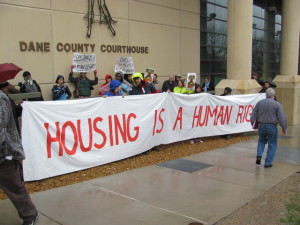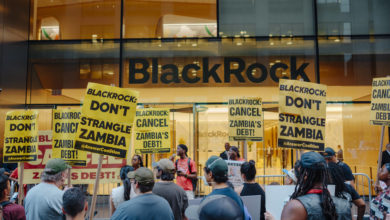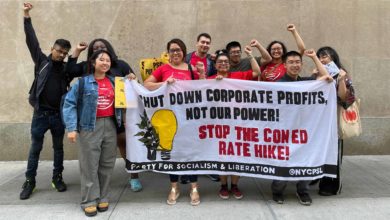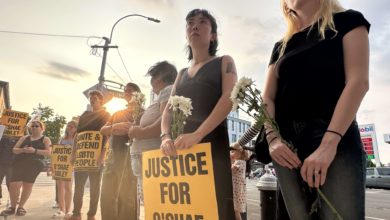 The way U.S. society is organized has produced some almost unbelievable realities. The housing situation in New York City is just one of the absurd but predictable consequences of the so-called “free market” or capitalist system.
The way U.S. society is organized has produced some almost unbelievable realities. The housing situation in New York City is just one of the absurd but predictable consequences of the so-called “free market” or capitalist system.
Over the last year, real estate publications have been reporting on the huge amount of homes that sit empty despite having cost buyers millions of dollars to purchase. According to an article in The Real Deal, 30 percent of apartments between 44th street and 70th street in Manhattan remain completely empty “for at least 10 months out of the year.”
According to the same article, “the Census Bureau’s 2012 American Community Survey reveals that, 285 out of 496 apartments, or 57 percent, in a three-block stretch of Midtown, from East 56th Street to East 59th Street, between Fifth Avenue and Park Avenue, are vacant at least 10 months a year.”
Compare this to the desperate situation thousands of working-class women, men and children in New York City face in regards to housing. Child homelessness, for instance, has increased by leaps and bounds across the five boroughs in recent years. According to an article in the New York Post written in May 2013, “More than 53,000 city public-school students lack a permanent home—a five-fold increase over 2008. … As of October 2012, one out of every 20 public-school students was living in a shelter, at an address shared by multiple families or in a hotel or motel.”
Furthermore, housing advocates point to a record number of children spending the night in a city shelter system reaching – over 21,000 on any given night. At a new middle school in the recently gentrified neighborhood of Long Island City, in Queens, the New York Post reported that a whopping “44% of students lack permanent shelter.” This is made all the more appalling by the quickly rising luxury condos that have engulfed this historically working class neighborhood.
So what is the reason behind this apparent paradox? There is a surge of homes being built and bought (but not to be lived in temporarily or at all even) while thousands scramble for a roof over their heads.
The reason is no mystery. It is simply because the capitalist system gives anyone the “freedom” to build or buy a home—that is, anybody with enough “freedom” to have the vast amounts of money needed to buy or build a house. In other words, Green and not Need are the only requirement for building or buying a house, and whether somebody actually needs somewhere to live is secondary at best.
As the The Real Deal explained in an article this summer, a house can actually not be a home but instead be a business, a way to make money or even a way to hide money from would-be tax collectors. International investors poured $50 billion into real estate in the United States in 2012. Many of these overseas investors are simply looking to hide their cash—or generate big returns—by pouring their money into New York City property. Actually living in these properties for any length of time is not necessarily part of the plan.
Developers of these “pieds-a-terre,” as these rarely lived-in apartments are euphemistically called, sell the idea of empty homes with a positive twist to community leaders. For example, State Senator Liz Krueger, whose district includes Midtown, told The New York Times that real-estate developers have said to her, “Don’t worry, you won’t need any more services [schools, transportation, hospitals], because the buyers won’t be sending their kids to school here, there won’t be traffic.”
Liberation News spoke to Scott Hutchins, who is a member of housing advocacy group Picture the Homeless, about what he thought of all these empty homes.
“I think it’s outrageous!” exclaimed Hutchins, a longtime resident of New York City who, after getting his master’s degree, had a medical emergency that forced him into debt and then onto welfare for the first time in his life. Hutchins, who is now 38, conversed with me via phone, explaining what a real solution to homelessness could look like while sitting in his current residence—a city shelter in the Bronx.
“If you want to have a pieds-a-terre—ok, that’s your business, but it shouldn’t be done off the backs of others. There should be a tax on these homes.”
When I asked what that money should go towards, he replied, “Well, they should go to help the homeless but not to make more shelters. Shelters don’t work, it is not stable housing and that’s what people need. People don’t realize shelters are big business as well.”
Hutchins explained how supposed housing non-profits like Cuomo’s Help USA regularly post a huge “surplus” of money that was supposed to go to help homeless individuals but wind up in the pockets of administrators instead.
“Our main focus is to get community control of land. That is how we will be able to keep rent prices down. They should tax those empty homes and the money should be given to community land trusts. In the meantime, the city can work on finding real homes for individuals, stable housing, that’s what we need.”
As long as houses are treated first and foremost as property to be bought and sold—and not as homes—we will continue to see empty homes with homeless people sleeping outside them.






